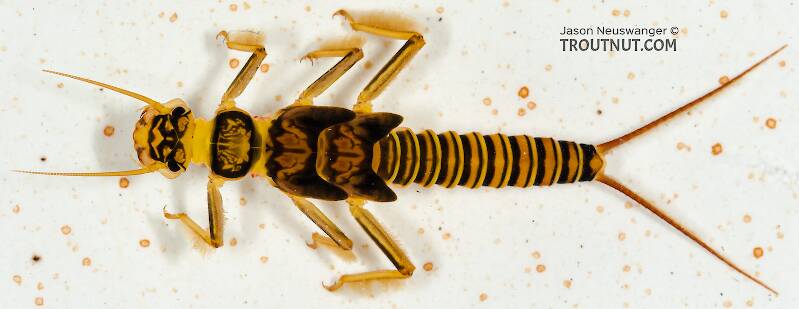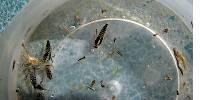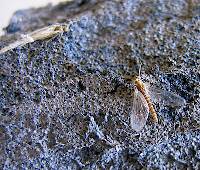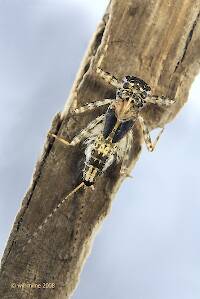
Blue-winged Olives
Baetis
Tiny Baetis mayflies are perhaps the most commonly encountered and imitated by anglers on all American trout streams due to their great abundance, widespread distribution, and trout-friendly emergence habits.
Featured on the forum

Some characteristics from the microscope images for the tentative species id: The postero-lateral projections are found only on segment 9, not segment 8. Based on the key in Jacobus et al. (2014), it appears to key to Neoleptophlebia adoptiva or Neoleptophlebia heteronea, same as this specimen with pretty different abdominal markings. However, distinguishing between those calls for comparing the lengths of the second and third segment of the labial palp, and this one (like the other one) only seems to have two segments. So I'm stuck on them both. It's likely that the fact that they're immature nymphs stymies identification in some important way.

Troutnut is a project started in 2003 by salmonid ecologist Jason "Troutnut" Neuswanger to help anglers and
fly tyers unabashedly embrace the entomological side of the sport. Learn more about Troutnut or
support the project for an enhanced experience here.

This large Perlodidae stonefly was a strikingly bright yellow color, more so than any other insect I've seen. I didn't enhance it much. See the discussion threads to follow how we identified this specimen, which was listed incorrectly for several years.
GONZO on Oct 3, 2010October 3rd, 2010, 8:37 am EDT
I believe that this is actually Isogenoides hansoni. When Dr. Chandler and Luke Myers made earlier "Cultus" comments on this specimen, they seem to have missed the prominent submental gills shown in photo #5 (and #7).
In addition to the submental gills (more than 2X as long as wide), the pale area on the 10th tergum, the distinct enclosed pale "M" mark on the head, and (often) the elongated pale spot in the center of the head are a few of the distinctive traits of this species. A complete description and a depiction of the dorsal habitus (figure #88) can be found in Sandberg and Stewart (Holomorphology and Systematics of the Stonefly Genus Isogeniodes, 2005).
The type specimens of I. hansoni were collected from my old homewaters on the Brodheads in 1937 by Preston Jennings (the author of the classic A Book of Trout Flies).
Cultus verticalis is a smaller, pale yellowish nymph, typically with a bolder, simpler dorsal pattern and less intricate markings on the dorsal surface of the head/thorax.
In addition to the submental gills (more than 2X as long as wide), the pale area on the 10th tergum, the distinct enclosed pale "M" mark on the head, and (often) the elongated pale spot in the center of the head are a few of the distinctive traits of this species. A complete description and a depiction of the dorsal habitus (figure #88) can be found in Sandberg and Stewart (Holomorphology and Systematics of the Stonefly Genus Isogeniodes, 2005).
The type specimens of I. hansoni were collected from my old homewaters on the Brodheads in 1937 by Preston Jennings (the author of the classic A Book of Trout Flies).
Cultus verticalis is a smaller, pale yellowish nymph, typically with a bolder, simpler dorsal pattern and less intricate markings on the dorsal surface of the head/thorax.
Quick Reply
Related Discussions
Topic
Replies
Last Reply
Acroneuria specimen moved from genus to species level
In Acroneuria carolinensis Stonefly Nymph by Entoman
In Acroneuria carolinensis Stonefly Nymph by Entoman
0
Mar 11, 2012
by Entoman
by Entoman
8
Feb 12, 2009
by Troutnut
by Troutnut
2
Feb 6, 2017
by Crepuscular
by Crepuscular
0
Apr 8, 2013
by Entoman
by Entoman
4
Mar 11, 2012
by Entoman
by Entoman




